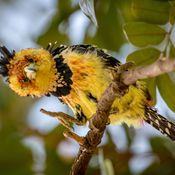Area Highlights

🌍 Location: Borders the western edge of Kruger National Park in South Africa’s Limpopo province, part of the Greater Kruger ecosystem
📏 Size: Around 53,000 hectares of unfenced wilderness, allowing free movement of wildlife into Kruger
🏞 Scenery: Classic Lowveld bushveld—mixed woodlands, riverbeds, and open plains—ideal for varied safari experiences
🦁 Wildlife: Home to the Big Five and renowned for its rare white lions, as well as strong populations of wild dogs, cheetahs, and hyenas
🐦 Birdlife: Over 360 species, including hornbills, rollers, kingfishers, and raptors
📸 Photography highlights: Exclusive sightings, iconic predator encounters, and the chance to capture the legendary white lions in their natural habitat
🕰 History: Established in 1956 by local landowners, later integrated into the Greater Kruger; dedicated to conservation and sustainable eco-tourism

About Timbavati
Buffalos, lions, giraffes, wildebeest, impalas, baboons, cheetahs, leopards, and the rare white lion – the list of wildlife in the Timbavati Game Reserve is mind-blowing and goes on and on.
This private game reserve, adjacent to Kruger, has over 40 mammals roaming freely. Covering 75.000 hectares of bush, you will experience a more intimate and personal affair with wildlife than anywhere else. Being in a private game reserve, jeeps are allowed to go off-road – in contrast to Kruger Park where vehicles are restricted to paved roads – and get much closer to animals.
The bright white icing on the cake in Timbavati Game Reserve is the presence of the rare white lion. A crème-coloured coat, ice blue eyes; their beauty is captivating. Although born with a snow-white coat, white lions are not albinos; it is the result of a rare colour mutation. White lions are indigenous to the Timbavati Game Reserve and the earliest records of sighting them in this region date from 1938.
Due to an agreement of all parties in 1999, the fence was taken down. Now, no fences separate Timbavati’s 75.000 hectares from the Kruger Park, so herds are free to track along the ancient paths they roamed for ages. In the Timbavati Game Reserve, wildlife can be viewed up close, since vehicles are allowed to approach animals within six meters.
Beside the Big Five and dozens of other mammals, here is one exclusively for the birdwatchers among us.Get your cameras ready for the ‘Big Six’: Lappet faced Vulture, Martial Eagle; Saddle billed Stork, Kori Bustard, Ground Hornbill and Pel’s Fishing Owl. Africa’s most intriguing feather friends!
Kruger National Park
Established in 1898 to protect the wildlife of the South African Lowveld, this national park is unrivalled in the diversity of its life forms and a world leader in advanced environmental management techniques and policies. Kruger is home to an impressive number of species: 336 trees, 49 fish, 34 amphibians, 114 reptiles, 507 birds and 147 mammals.
Truly the flagship of the South African National Parks, this enormous and magnificent park is one of the most popular public-entry game parks in the world.
The Greater Kruger
The Greater Kruger is the collective name given to the private reserves on the western boundary of the Kruger National Park. These include the Klaserie, Umbabat, Timbavati, Balule, Manyeleti, and Sabi Sand reserves. These reserves dropped their fences to become part of one pristine tract of protected wilderness in the name of biodiversity conservation.
































